The Hope Ranch Tortoise Herd
Mitch Telson Cares for 15 Sulcatas with Big Shells and Big Personalities
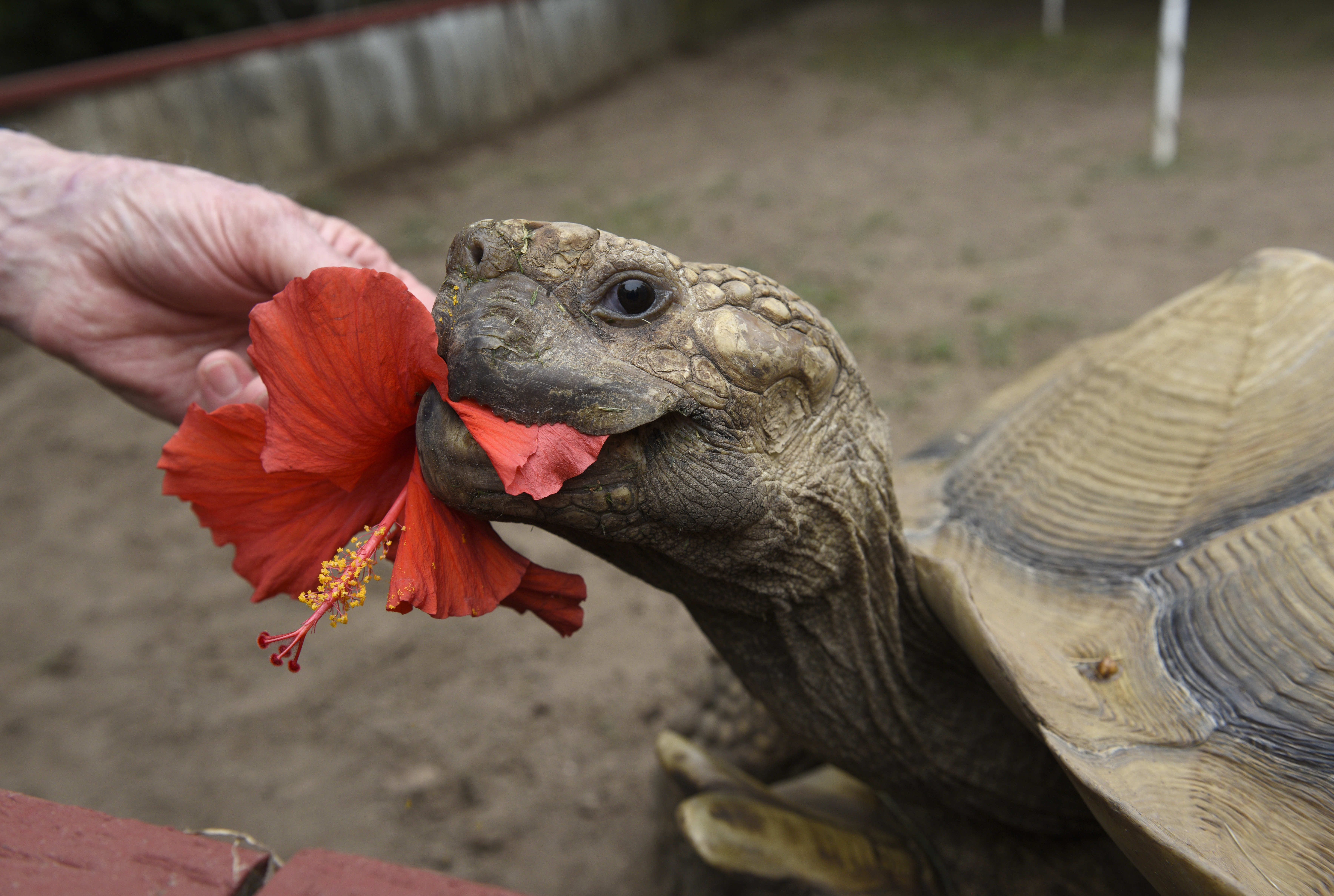

Mitch Telson’s affection for turtles and tortoises goes back to his boyhood, when he drove across the country from Baltimore with a box turtle in his lap. His collection has grown slightly since then ― Telson now cares for 15 big-bodied sulcata tortoises that quietly lumber around his Hope Ranch estate in low-fenced pens shaded by avocado trees. The star of the herd ― or “creep,” as a group of tortoises is called ― is Rex, a 200-pound bruiser with a penchant for hibiscus flower treats.
Telson shares the property with his wife, Jeffyne, and her much-beloved cat rescue and adoption organization, ResQcats. They also own nine border collies. Like the cats and dogs, the tortoises came from tough backgrounds. Many were given up by ill-informed owners who bought them as babies and realized they couldn’t care for them as full-grown adults. Some were abandoned, including one in Santa Barbara’s front country. The others arrived from all over the country ― Indiana, Virginia, Utah, Massachusetts, etc. ― and each has a distinct personality. While Speedy and Flash will walk right up to you, Sonny and Cher are a little more shy. All live a life of true tortoise luxury under Telson’s watch.
Indigenous to sub-Saharan Africa, sulcatas mainly subsist on a diet of weeds. As such, each pen is fitted with sprinklers to make the weeds grow, and gardeners regularly fill bins with greenery from the rest of the yard. Every night, the tortoises slowly make their way into individual hand-built hutches with heating lamps and hay, and Telson latches the door behind them. It’s a routine they’ve kept up for decades and will hopefully continue for many more. These reptiles can live more than 100 years.
Sulcatas, Telson explains, are prolific “eaters, breeders, and poopers.” Their large number twos look like horse droppings. Mating is often accompanied by loud grunting, and while they will occasionally lay clutches of eggs, it’s too cool in Santa Barbara for them to hatch outside an incubator. Telson lets nature take over ― critters eat the eggs or the earth absorbs them ― because sulcatas are far from endangered. In fact, they’re overbred and oversold. Telson implored potential owners to adopt, not buy.
Telson smiled as he explained all this while perched on the edge of Rex’s pen, feeding him flowers. After a little while, Telson climbed in with Rex and rubbed his back, which the tortoise could feel through his shell. Telson then gave him a tickle down near his hind legs, causing Rex to wiggle and do a little dance.

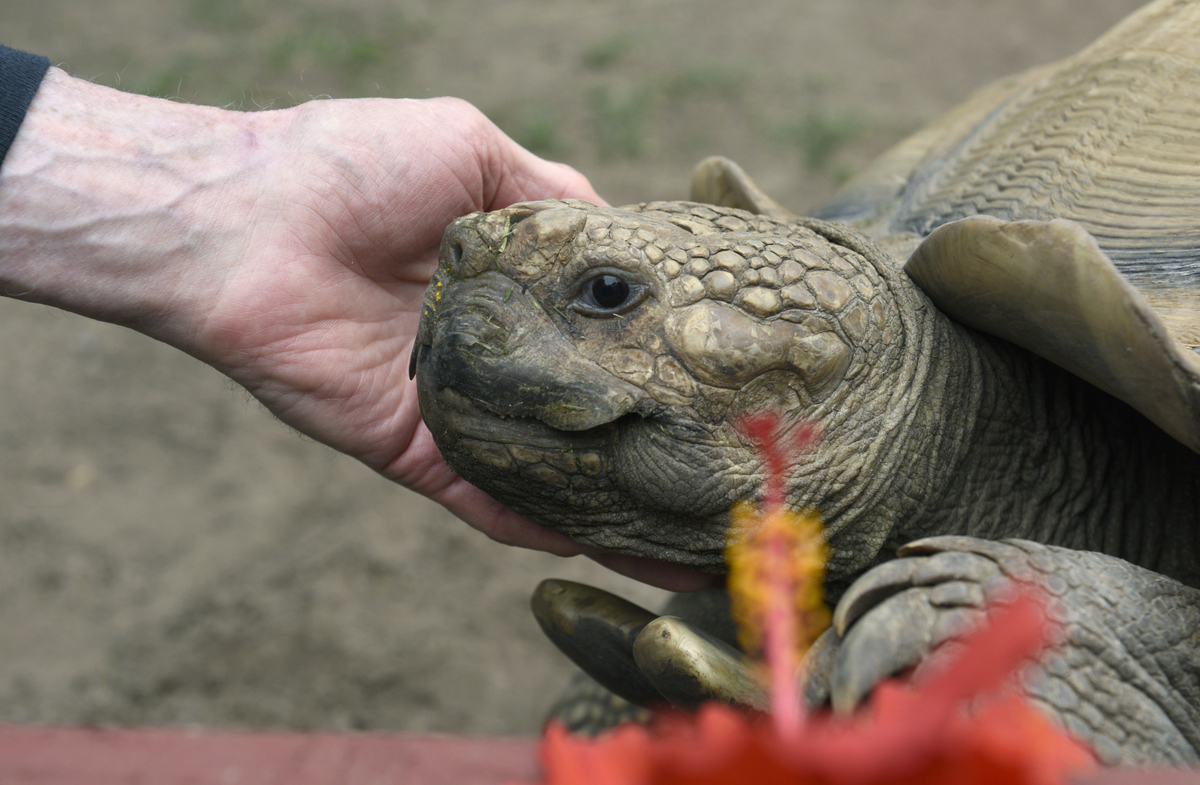
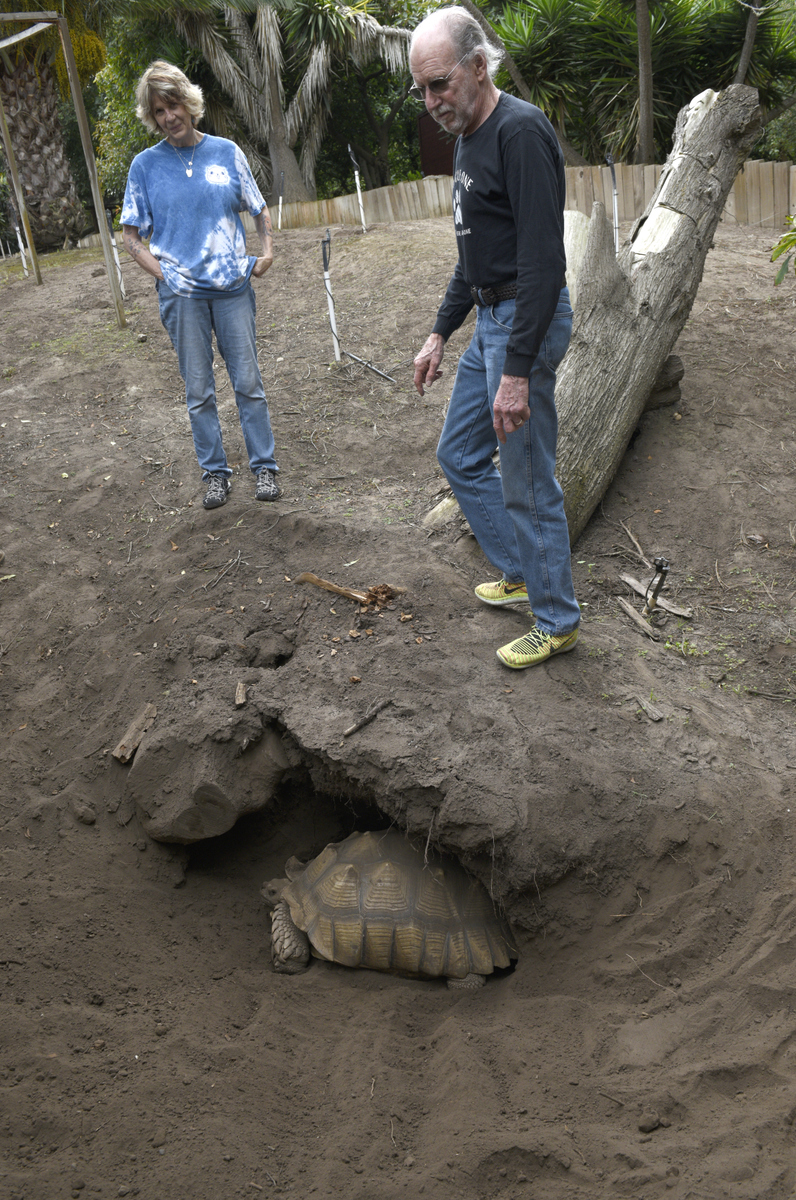
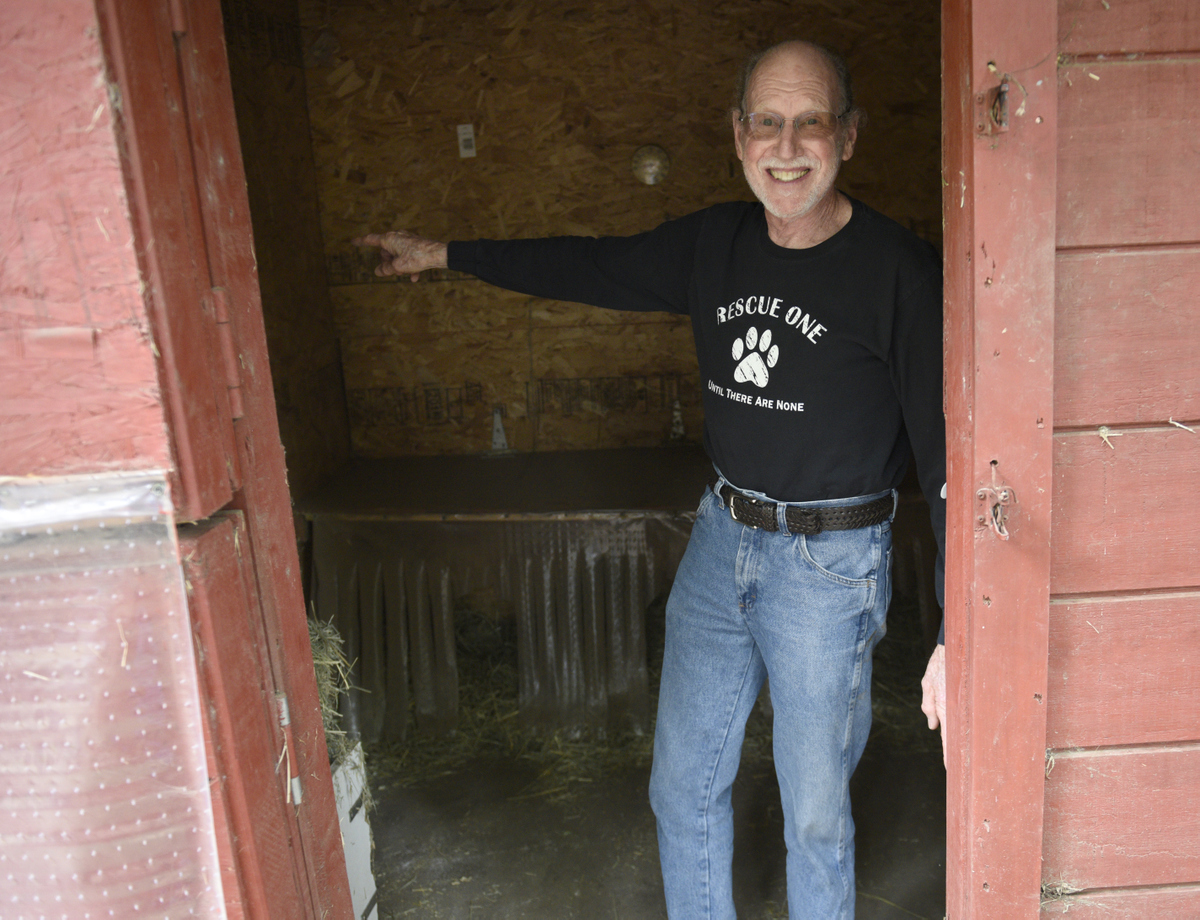
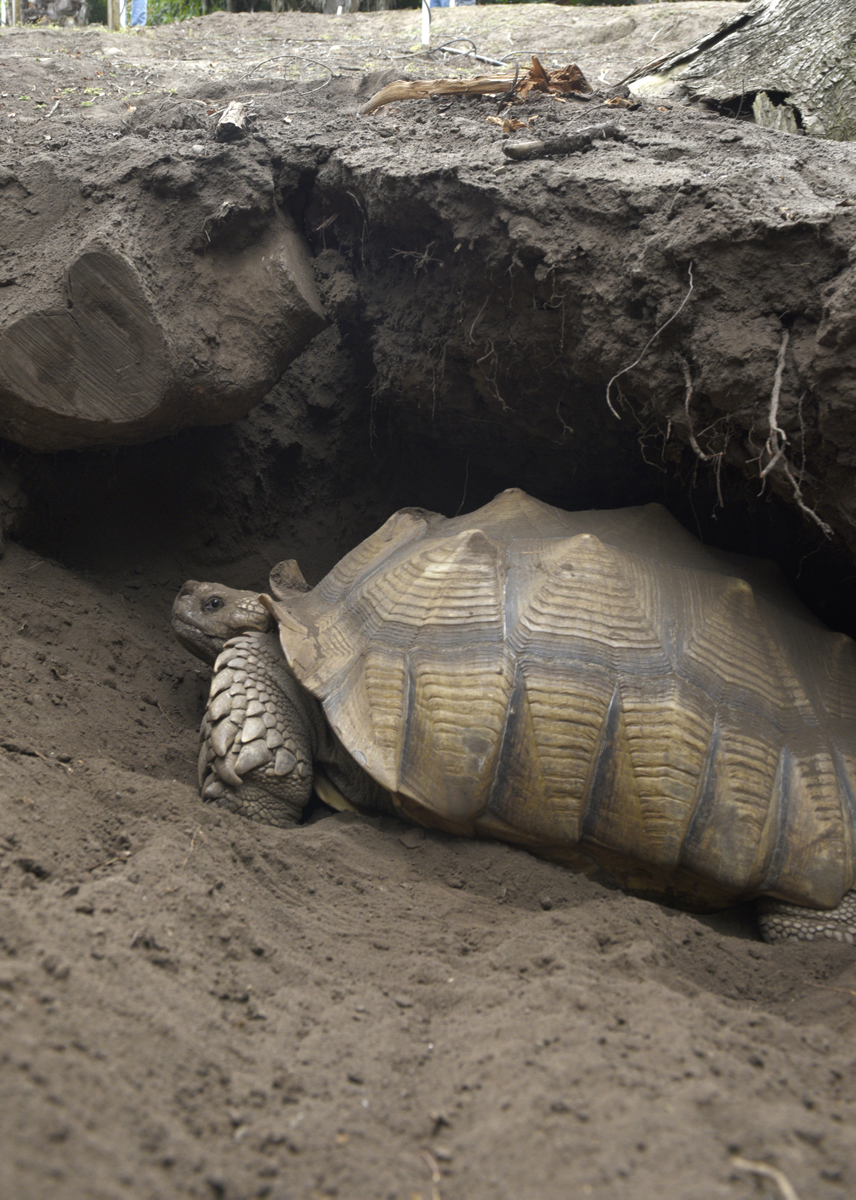
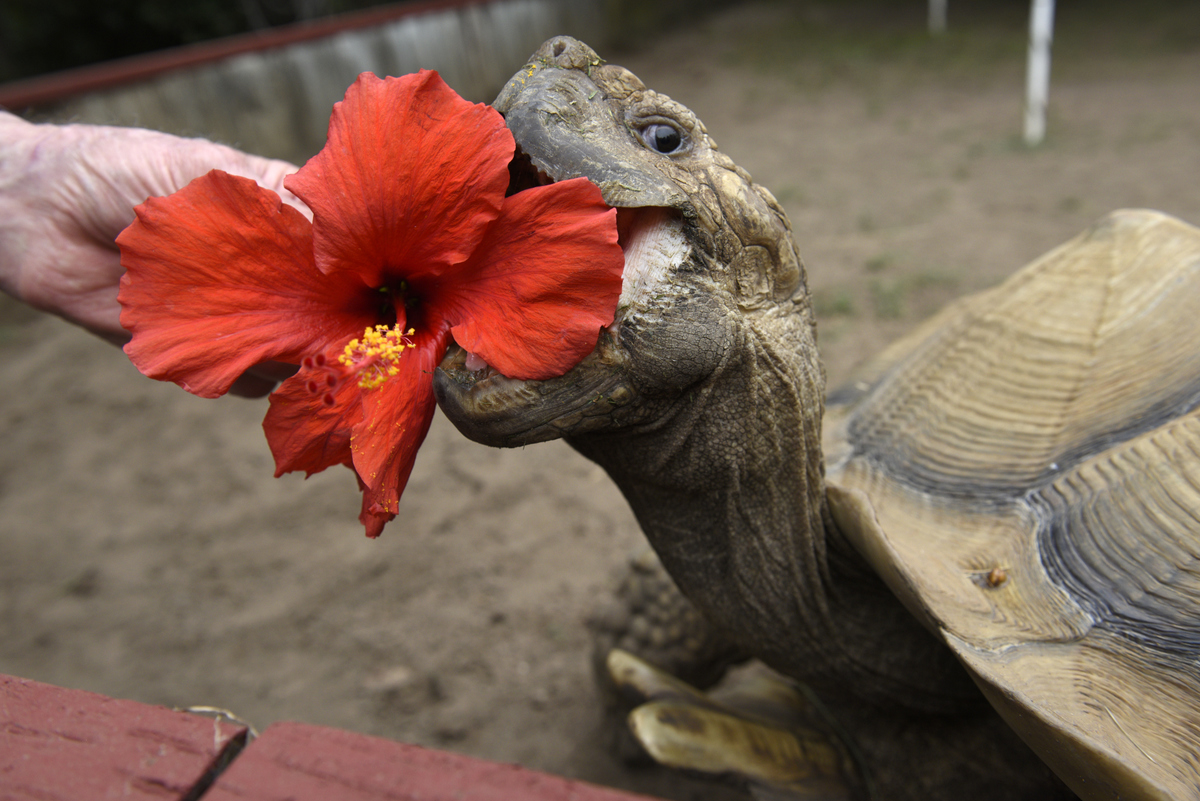
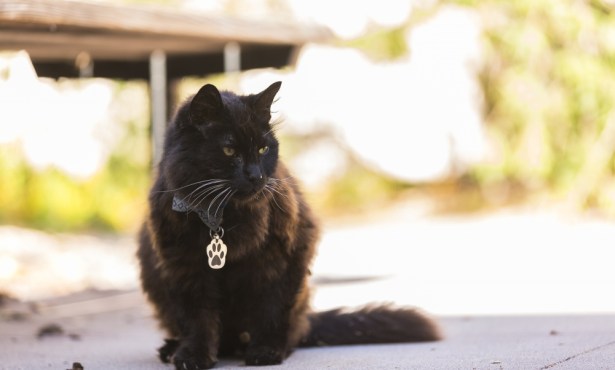


You must be logged in to post a comment.